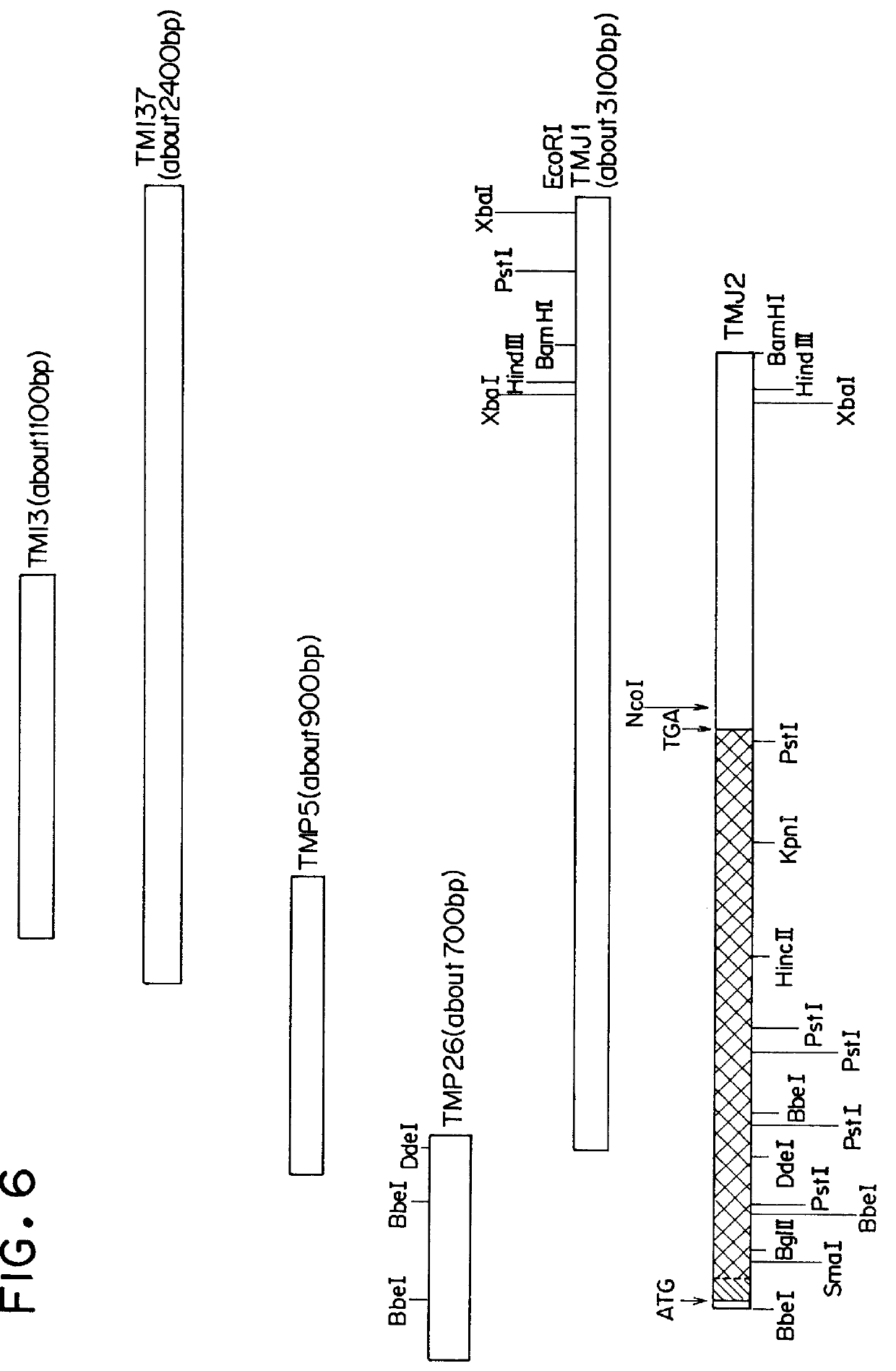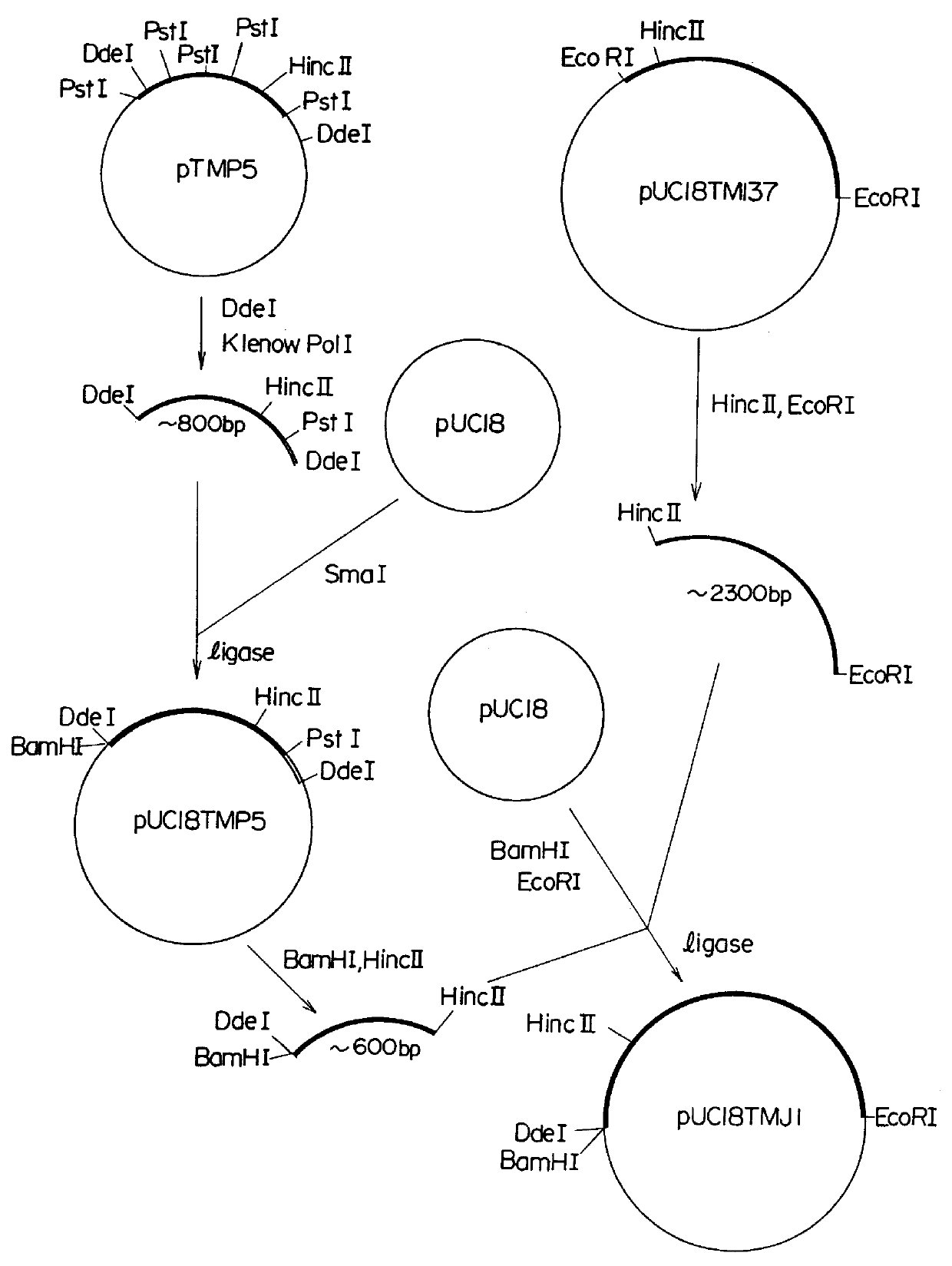Peptide having an ability to promote the activation of protein C by thrombin
- Summary
- Abstract
- Description
- Claims
- Application Information
AI Technical Summary
Benefits of technology
Problems solved by technology
Method used
Image
Examples
referential example 1
(Assay of the ability to promote the activation of protein C)
The ability of the peptide of the present invention to promote the activation of protein C was assayed according to a customary assay method for protein C in which use is made of a synthetic substrate, Boc-Leu-Ser-Thr-Arg-MCA (Boc and MCA are abbreviations for t-butoxycarbonyl group and 4-methylcoumaryl-7-amide, respectively.) [Y.Ohno et al, J. Biochem., Vol. 90, p.1387 (1981)]. Illustratively stated, to 5 .mu.l of an aqueous solution containing 0.5 .mu.M protein C and 80 nM thrombin were added 5 .mu.l of an aqueous solution containing the peptide of the present invention (0 to 0.01 A.sub.280 / ml). To the mixture were added NaCl, CaCl.sub.2, serum albumin and Tris-HCl buffer (pH7.4) so that the final concentrations of NaCl, CaCl.sub.2, serum albumin and Tris-HCl buffer became 0.15 M, 2.5 mM, 1 mg / ml and 20 mM, respectively and that the final volume became 30 .mu.l. The obtained mixture was kept at 37.degree. C. for 15 min ...
referential example 2
(1): (Obtainment of a human lung cDNA library)
A bacteriophage .lambda.gt11 cDNA library which was prepared using poly(A).sup.+ RNA derived from a human lung was purchased from Clontech Laboratories, Inc., 922 Industrial Ave., Palo Alto, Calif. 94303, U.S.A. (catalog No. HL1004).
(2): (Purification of a glycopeptide having the ability to promote the activation of protein C by thrombin)
A glycopeptide having the ability to promote the activation of protein C by thrombin was extracted from a human lung as follows. About 800 g of a human lung specimen provided by a public hospital was cut with scissors into pieces of 1 cm cube. To the thus obtained tissue pieces was added 500 ml of a physiological saline containing 1 mM DFP (diisopropyl fluorophosphate) which had been cooled to 4.degree. C. The obtained mixture was homogenized using, as a Waring blender, Ace Homogenizer model AM-1 (manufactured by Nihonseiki Kaisha Ltd., Japan) at 4.degree. C. for 5 min. After the homogenization, the mixt...
referential example 3
(Preparation of a recombinant DNA)
(1): (Preparation of Poly(A).sup.+ mRNA)
A poly(A).sup.+ mRNA was prepared from human endothelial cells according to the method of Chirgwin et al. [Chirgwin, J. M. et al., Biochemistry, Vol. 18, p.5294 (1979)].
(2): (Screening from a human lung cDNA library)
E. coli Y1090 cells were infected with a cDNA library (manufactured by Clontech Laboratories Inc., U.S.A.) which was obtained by inserting cDNA's prepared from poly(A).sup.+ mRNA derived from a human lung into bacteriophages .lambda.gt.sub.11. The infection as conducted in accordance with a manual for the cDNA library. The infected E. coli Y 1090 cells were inoculated on an LB plate having a diameter of 15 cm so that about 100,000 plaques were formed per plate. The cells were cultured at 42.degree. C. for 3.5 hours and, thereafter, a nitrocellulose filter (BA85 Membrane Filter, manufactured by Schleicher & Schuell, West Germany) which had been immersed in 10 mM IPTG (isopropyl-.beta.-D-thiogalactop...
PUM
| Property | Measurement | Unit |
|---|---|---|
| Aggregation | aaaaa | aaaaa |
Abstract
Description
Claims
Application Information
 Login to View More
Login to View More - R&D
- Intellectual Property
- Life Sciences
- Materials
- Tech Scout
- Unparalleled Data Quality
- Higher Quality Content
- 60% Fewer Hallucinations
Browse by: Latest US Patents, China's latest patents, Technical Efficacy Thesaurus, Application Domain, Technology Topic, Popular Technical Reports.
© 2025 PatSnap. All rights reserved.Legal|Privacy policy|Modern Slavery Act Transparency Statement|Sitemap|About US| Contact US: help@patsnap.com



